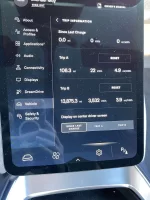Excellent video! Wouldn’t expect anything less from Bobby

A few statements-of-the obvious:
- One cannot take a simple “Drag Coefficient” (<0.2 for the Lucid Air) and assume everyday driving conditions are a laminar flow in line with the long axis of the car in a wind tunnel. Hence the debate about whether miles/kWh scales with the square or the cube is mostly academic.
- Since the driver can’t change the temperature, wind speed, wind direction, or altitude, speed is the big modulator, perhaps the only modulator, as Bobby noted.
On a recent drive from Phoenix to Sausalito (AGT, see my other posting), I was cruising along I10 and I5 (going north) from Indio to Buttonwillow (~250 miles). I left Indio @ 80% SoC. Buttonwillow is my next charging spot. After climbing the mountains out of LA and towards Buttonwillow averaging 75+ mph, I found my SoC running below 7% when I was still ~20 miles or so outside of Buttonwillow. I slowed down to ~62 mph and made it to the Buttonwillow EA charger with less than 2% SoC. These numbers are consistent with what I reported in my posting and in line with Bobby’s observations.
Relatively speaking, the charging infrastructure along I10/I5 in CA is probably one of the best in the US. As such, I wasn’t panicking. Nevertheless, one needs to be “situational-aware”. Transcending elevations, wind, speed, and temperature, all come into play. Prepare to slow down when the energy consumption is more than you anticipated. Plan well and be alert!


